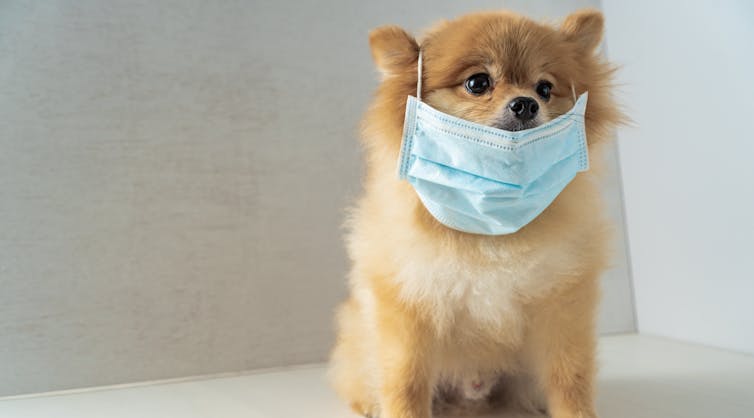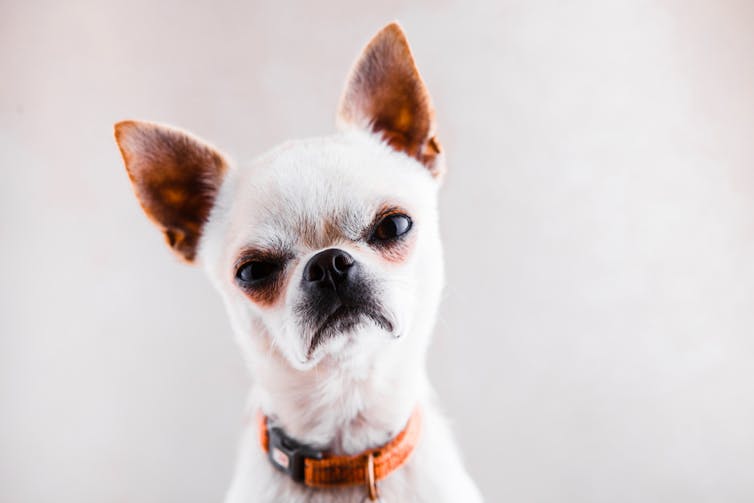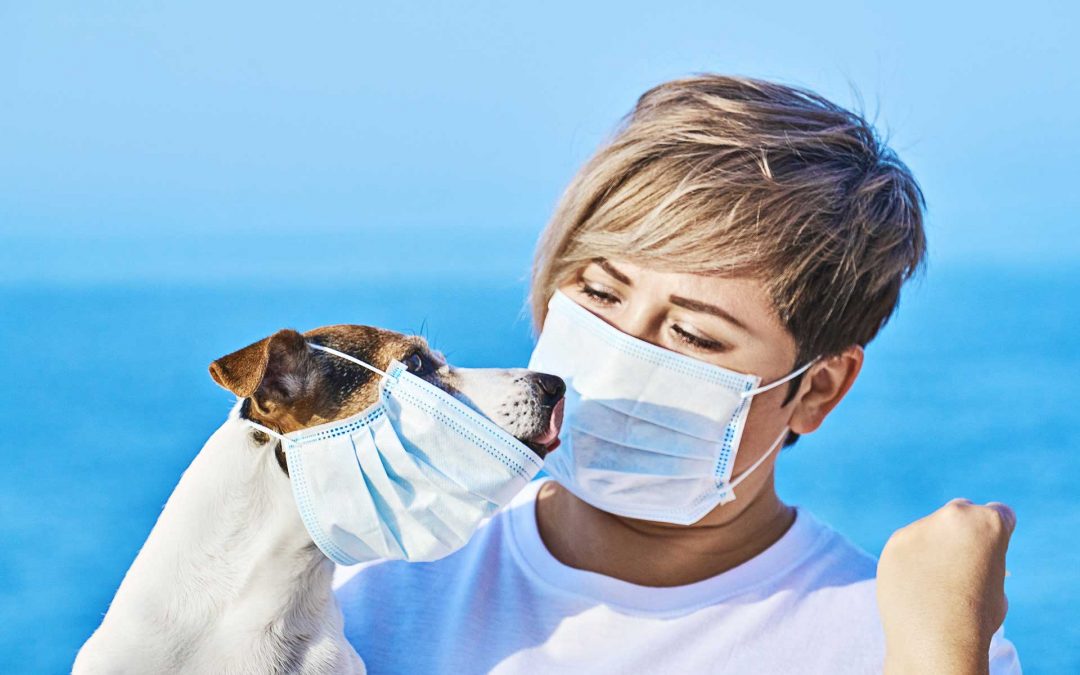Advice from the Australian Veterinary Association to pet owners

What is a coronavirus?
Coronaviruses are a group of viruses that infect birds and mammals, including humans. They are often associated with the common cold, bronchitis and pneumonia, and can also affect the gut. The virus that causes COVID-19 is also a coronavirus and likely originated from a wildlife reservoir. Canine coronavirus, which can cause diarrhoea, and feline coronavirus, which can cause feline infectious peritonitis (FIP), have been seen by veterinarians for many years. They do not cause infections in humans. These coronaviruses are not associated with the current COVID-19 pandemic.
Can COVID-19 infect pets?
There have been reports from Hong Kong that a dog owned by a patient with COVID-19 has tested positive to the presence of the virus in its nose and mouth. This is may be a case of human to animal transmission, however the dog’s first blood tests have been negative. At this stage there is no evidence that pet dogs or cats are a source of infection to other animals or humans. We are continuing to monitor this situation and will provide updated information as it becomes available.
Should I avoid contact with pets or other animals if I am sick with COVID-19?
As the outbreak continues, a number of pet owners will be placed in quarantine, either with confirmed COVID-19 infection or due to exposure. We know that your pet is part of your family and you will want them to have the same level of protection and care as any other family member. Current information suggests there is no apparent risk to you or your pet from being in quarantine with you. However, we do advise all pet owners continue to practice appropriate hand hygiene before and after handling their pet, their food and washing food/water bowls. At no stage should pet owners do anything that may compromise the welfare of their pets. We suggest minimising close contact with your pet during this time, such as hugging, face to face contact or sleeping on your bed.
What do I do if I am in quarantine or self-isolation and my pet is unwell?
If you are in quarantine, do not break quarantine to take your pet to the veterinarian even if your pet is unwell. By doing this you will put your veterinarian and staff at risk of infection. Ring your veterinary surgery first and ask for advice. If your pet needs to be seen, your veterinarian will be able to work with you to ensure your pet will receive the care they need, while keeping themselves and their staff safe from COVID-19 infection. If your vet provides house calls, please let them know you are under quarantine before they arrive.
If you have any other concerns about your pet, please ask your Fur Life Vet.
Note that this is a rapidly evolving situation and advice provided here is reflective of the evidence at hand on 16 March 2020. For up to date information on the COVID-19 situation in Australia go to health.gov.au
Another Great Article on COVID-19 and Your Pet
Here’s why you needn’t worry about pets spreading COVID-19
This article is republished from The Conversation under a Creative Commons license. Read the original article.

A Pomeranian dog in Hong Kong grabbed the international media’s attention this week after scientists found traces of coronavirus in the canine. Following confirmation that the dog’s owner was positive for the virus causing COVID-19, the dog was taken from Hong Kong Island to a nearby animal quarantine facility. Subsequent tests performed on swabs collected from the dog’s nose and throat unexpectedly revealed coronavirus.
These results have raised many questions and concerns. Can our dogs really catch the virus? Should we be worried about our pets getting sick? Could dogs spread coronavirus between people?
A positive test for coronavirus in this dog simply means that a small piece of viral genome was detected in a sample. PCR (a test used to detect genetic material) is a highly sensitive method of testing but is unable to tell whether coronavirus was replicating in the dog or whether the dog had simply licked contaminated surfaces in the home.
Read more:
Coronavirus: a weekly update from The Conversation’s global network of academics
It is unknown exactly how long the virus causing COVID-19 disease, called SARS-CoV-2, can survive in the environment. A study of other coronaviruses suggests they can remain infectious for several days if the temperature and humidity are right. Given that we don’t even know if the virus detected was infectious or not, we have no idea whether virus replication occurred in this particular dog.
We know that SARS-CoV-2 is transmitted by droplets, so it’s possible that dogs could act as dirty tissues, or “fomites”, that walk the virus around if adequate hygiene is not maintained.

Whereas SARS-CoV-2 has the limelight at present, there are actually many different types of coronaviruses, and coronaviruses infecting dogs is nothing new. The first coronavirus to be reported in dogs was back in 1974. More recently in 2003, a novel canine coronavirus causing respiratory disease was identified in dogs in an animal shelter in the UK. This virus has since been reported worldwide.
Although canine coronaviruses are distinct from SARS-CoV-2, dogs are clearly susceptible to this family of viruses. Despite this, there are no previous instances of human coronaviruses infecting dogs or vice versa. For a virus to jump species, there are several hurdles they must overcome.
The major barrier that stops a virus infecting a new type of animal is the host-cell surface. To infect canine cells, SARS-CoV-2 must be able to bind (attach) to canine receptors. Thanks to rapid research, we now know that SARS-CoV-2 uses the proteins ACE2 and TMPRSS2 to gain entry into cells. Dogs have both these proteins, but they are not identical to the human versions, so the virus may not be able to use them as efficiently.
If we assume that the virus can bind, enter and replicate within canine cells (this is still a big if), then it is reasonable for dog owners to be worried about whether their dogs will become sick following infection. It is reassuring that the Pomeranian at the centre of this media attention has not shown any signs of illness. Though this is a single case study, there is no reason to believe that the human virus should cause disease in dogs at this stage.
Could dogs transmit SARS-CoV-2 to humans?
To pass on coronavirus, the virus must replicate in dogs at high enough levels to be released from the body. Reports state that only low levels of the virus could be detected in the Pomeranian. How much virus does it take to infect a person? Again, we don’t yet know.
We do know for a number of different viruses that, although human-to-dog transmission is theoretically possible, human-to-human spread is much more efficient. We and others have shown that dogs can be susceptible to human norovirus, a major cause of vomiting and diarrhoea worldwide. Yet despite millions of cases of this virus each year, only a single definitive instance of human-to-dog transmission has been reported. Full genome sequencing was instrumental in that particular case, and will also be required to conclusively prove a role for dogs in the current SARS-CoV-2 outbreak.
Even in the worst-case scenario of coronavirus being able to replicate in dogs at reasonable levels, it is safe to assume that you are much more likely to be infected by your neighbour than your dog. However, it is essential to practice good hygiene around any pets. This will prevent them from inadvertently carrying viruses on their coats and spreading it from person to person. Please cough into your elbow, not on to your dog.
Sarah L Caddy, Clinical Research Fellow in Viral Immunology and Veterinary Surgeon, University of Cambridge
This article is republished from The Conversation under a Creative Commons license. Read the original article.



Recent Comments